LHC restart: 'Experimental' current blast fixes glitch
- Published
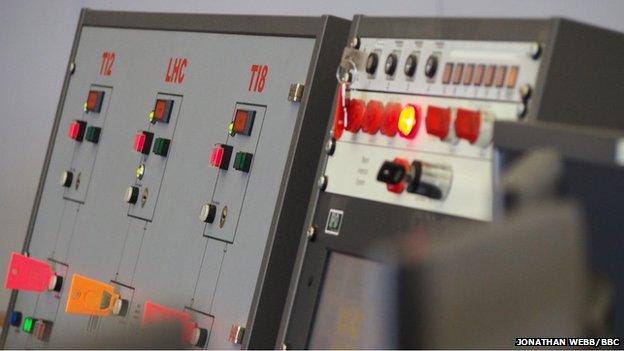
After a raft of more routine tests in the next few days, proton beams will circle the LHC once again
The short circuit delaying the restart of the Large Hadron Collider has been fixed, after a blast of high current melted the metal particle responsible.
It is now likely that the LHC will see beams of protons racing around its 27km circumference early next week.
The massive machine's second run, after a two-year refit, had faced a delay of up to several weeks after the glitch was discovered ten days ago.
But now only much more routine tests remain to be completed.
Cern, the European organisation for nuclear research, announced, external on Tuesday that Run Two of the collider was "back on track".
The short circuit was caused by a tiny piece of metal debris, which found its way into the pipes and became lodged in the wiring of one of the LHC's powerful electromagnets.
A short caused by dust or debris is a common enough fault, but one which could have taken weeks to fix if the team had needed to warm the magnet up from its operating temperature of nearly -273C (absolute zero).
'Like blowing a fuse'
The mercifully rapid repair was something of an experiment, according to the head of Cern's beams department, Dr Paul Collier.
After his team pinpointed the location of the fault - to within centimetres - using electrical signals, they "had a number of methods to explore", Dr Collier told BBC News.
One would have been to hose down the area with helium gas, which could be done remotely; another would have been to open the magnet up and send in an engineer.
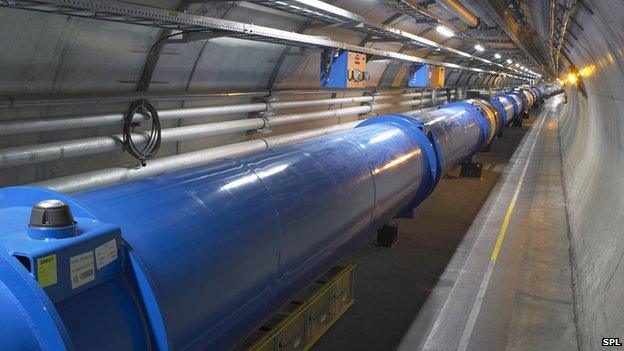
Protons will be steered around the LHC by nearly 10,000 supercooled magnets
"Maybe the safest mechanism would have been to warm up the machine and go in there and clean it out - but that would have been a very long process," Dr Collier said.
So instead they tried something new: passing nearly 400 amps of current directly through the short circuit, for just a few milliseconds - "in the same way you would blow a fuse".
Measurements made on Monday evening suggested the trick had worked, and this was confirmed when high voltages were put through the circuit on Tuesday.
"There's no short there now, even at high voltages," Dr Collier said, clearly pleased with the solution.
"We can't pretend this is the only fragment in the system; it could well recur in the future. But now we've got a mechanism to deal with it relatively quickly - much more quickly than we did this time."
A vast, subterranean "atom smasher", the LHC is famous around the world for pushing the boundaries of physics - including the discovery of the Higgs boson in 2012.
Its much-anticipated reboot will slam protons together with twice as much energy as ever before, which researchers hope will yield insights into huge, outstanding questions like the existence of dark matter and supersymmetry.
Actual collisions will still not recommence until at least May; the first big step is to send beams all the way around the machine's parallel pipes, in both directions - and this is now only days away.
Follow Jonathan on Twitter, external
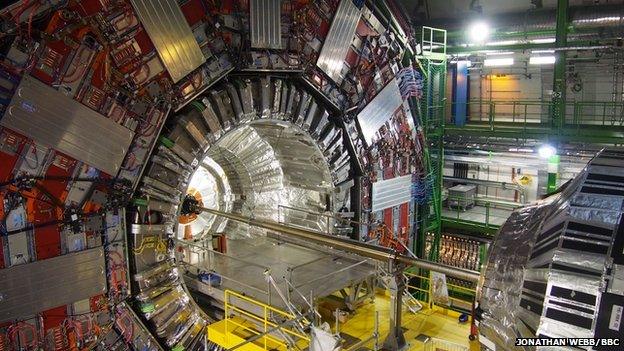
Bring on the beams: Massive experiments like CMS (pictured during the shutdown) are ready for protons
- Published24 March 2015
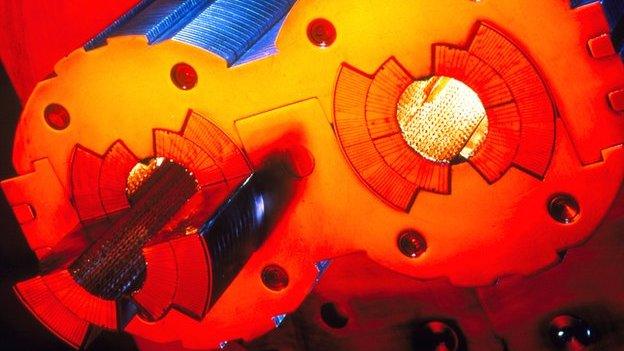
- Published16 March 2015
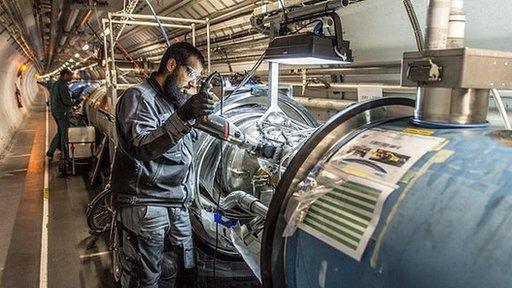
- Published5 March 2015
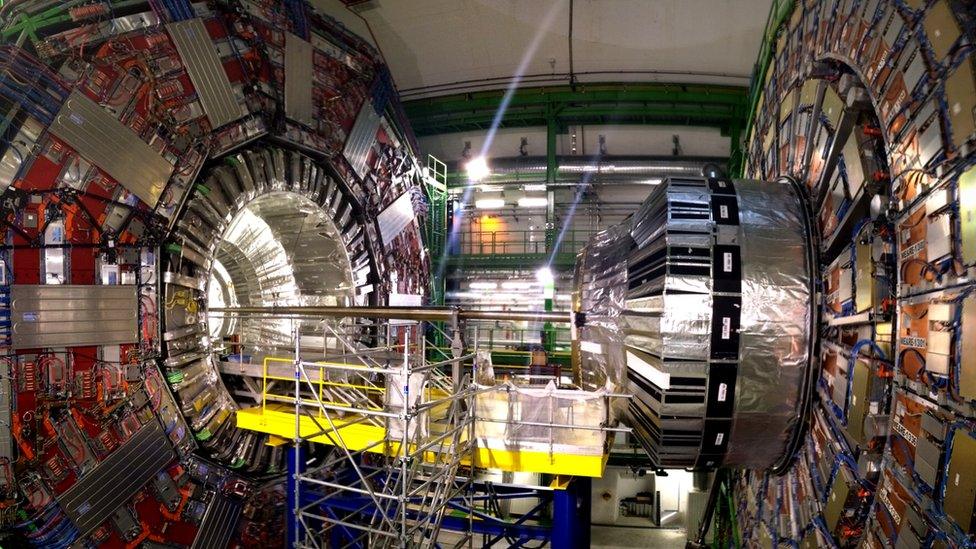
- Published15 February 2015
